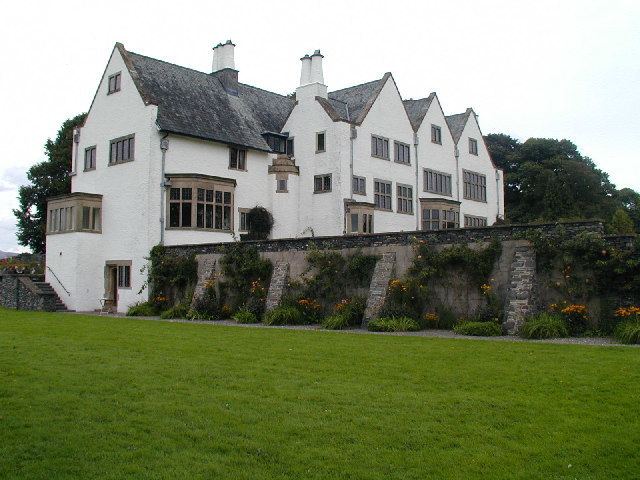Opened 1900 | Country England Phone +44 15394 46139 Client Joseph Holt's Brewery | |
 | ||
Hours Closed now Saturday10:30AM–4PMSunday10:30AM–4PMMonday10:30AM–4PMTuesday10:30AM–4PMWednesday10:30AM–4PMThursday10:30AM–4PMFriday10:30AM–4PM Similar St Martin's Church - Bowness‑on‑Windermere, The World of Beatrix Potter Attr, Museum of Lakeland Life, Abbot Hall Art Gallery, Windermere Profiles | ||
Blackwell is a large house in the English Lake District, designed in the Arts and Crafts style by Baillie Scott. It was built 1898–1900, as a holiday home for Sir Edward Holt, a wealthy Manchester brewer. It is situated near the town of Bowness-on-Windermere with views looking over Lake Windermere and across to the Coniston Fells.
Blackwell has survived with almost all its original decorative features intact, and is listed Grade I as an outstanding example of British domestic architecture. The house is furnished with original furniture and objects from the period. The gardens were designed by Thomas Mawson in a series of terraces. Flowers and herbs border the terraces, which form sun traps on the south side of the house.
The house has been open to visitors since 2001 and hosts regular exhibitions including work by living artists such as Edmund de Waal in 2005. It won the Small Visitor Attraction Award in the Northwest of England for 2005. The house is managed by the Lakeland Arts Trust.
Description of house and contents
When the architect MH Baillie Scott built a holiday home overlooking Windermere for his client Sir Edward Holt he created Blackwell, a masterpiece of twentieth-century design; a perfect example of the Arts & Crafts Movement.
Blackwell retains many of its original decorative features, including a rare hessian wall-hanging in the Dining Room, leaf-shaped door handles, curious window catches, spectacular plasterwork, stained glass and carved wooden panelling by Simpsons of Kendal. The rooms contain furniture and objects by many of the leading Arts & Crafts designers and studios - metalwork by WAS Benson, ceramics by Pilkingtons and Ruskin Pottery and furniture by Morris & Co., Stanley Webb Davies, Ernest Gimson and Baillie Scott himself.
Acquisitions of furniture by Baillie Scott are on display, including an oak and ebony inlaid barrel chair with slatted sides, sideboard and a set of dining chairs. Blackwell offers more than most historic houses with several rooms displaying historical exhibitions that explore different aspects of the Arts & Crafts Movement.
The original gardens were laid out by Arts & Crafts garden designer, Thomas Mawson, in a series of terraces to achieve the very best views from the house over the lake towards the Coniston fells. Today, Blackwell is bordered by beautiful flower beds set against a terrace of York stone paving, providing shelter for garden chairs and tables, surrounded by fragrant flowers and herbs. On the lower terrace there is a long sweep of lawn.
